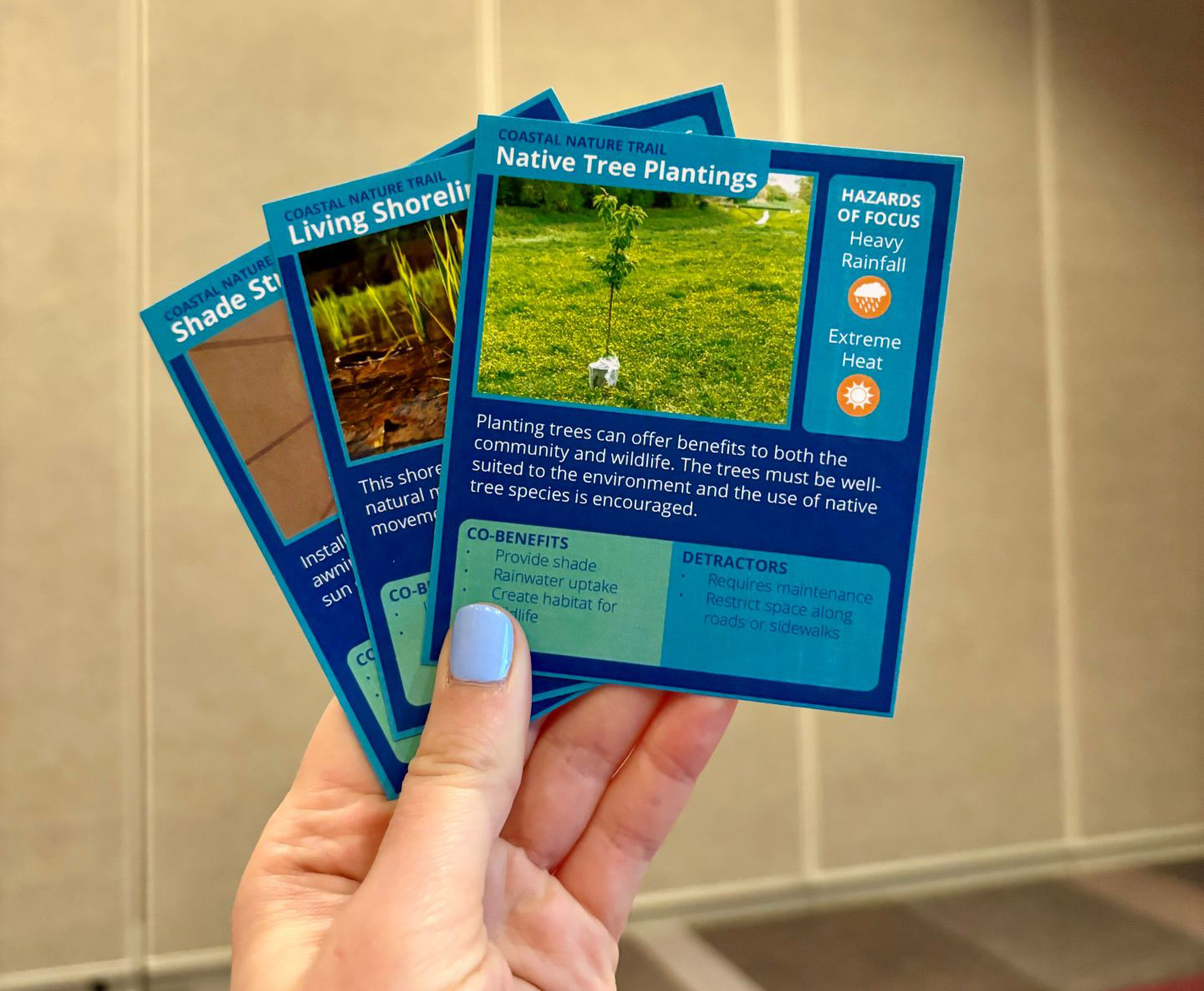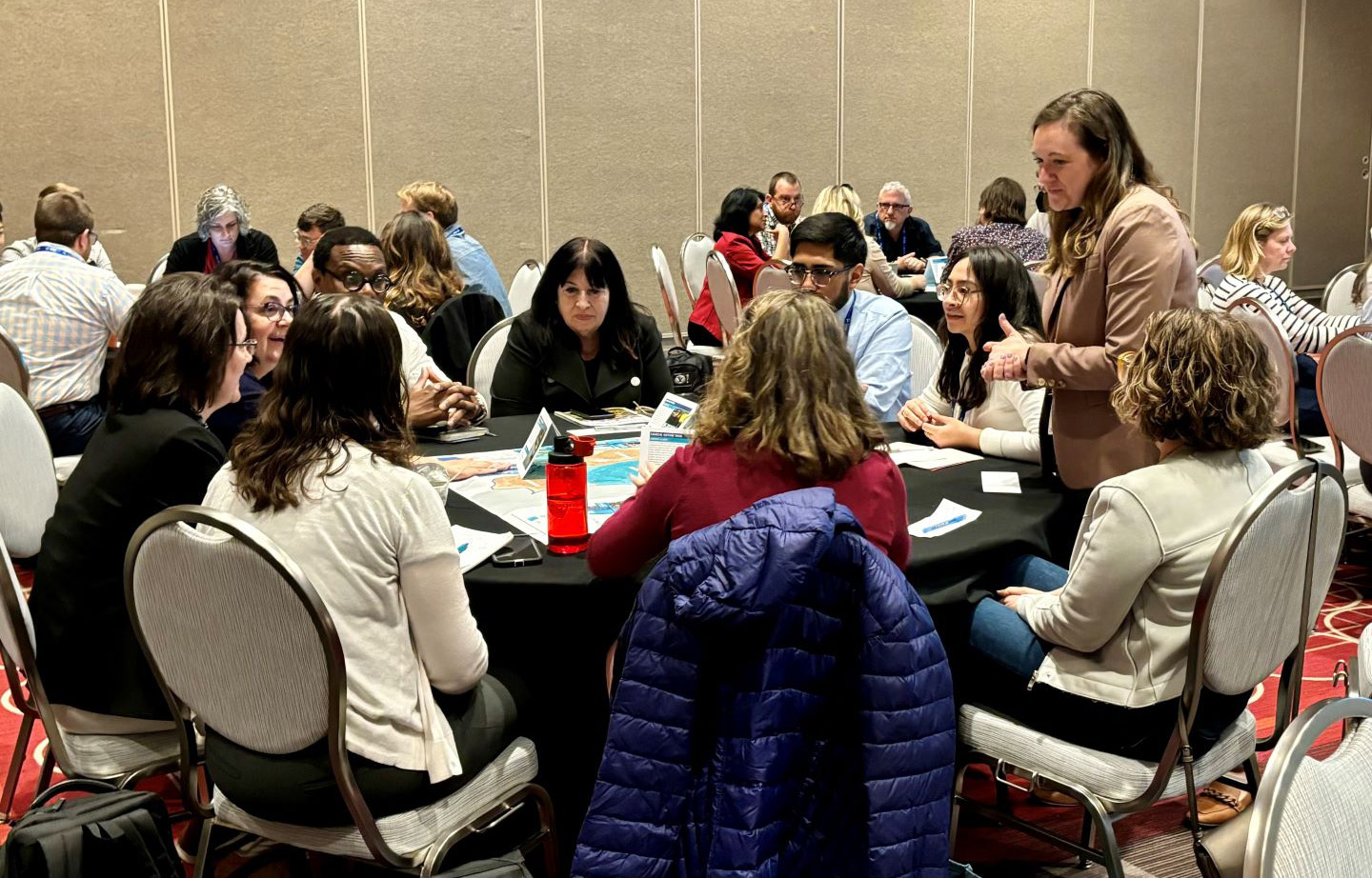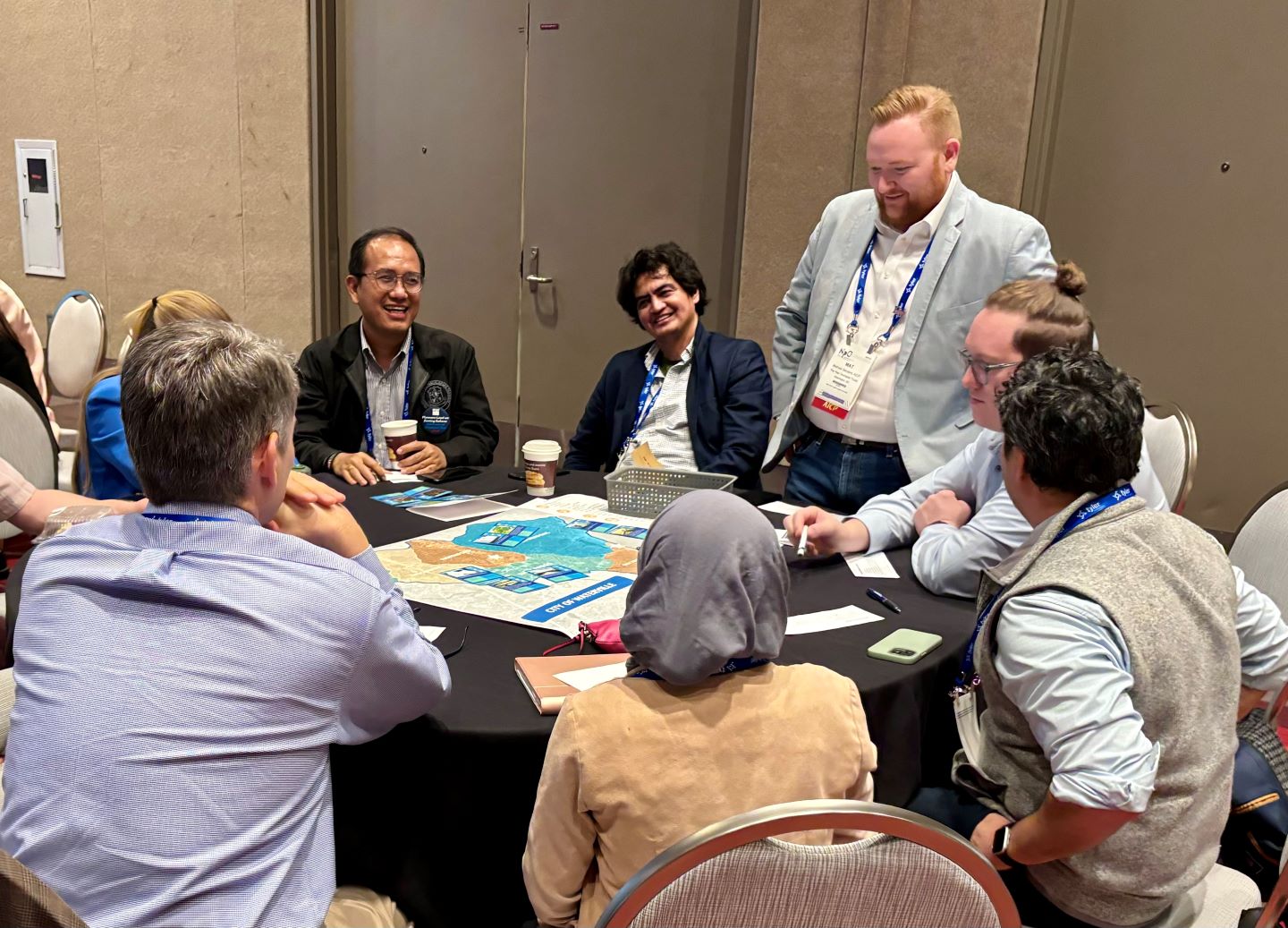Defining resilience can be a tricky task, partially because it’s a complex topic, and partially because it can mean something different to everyone. Our goal is to help clients and stakeholders better understand how to make their communities—infrastructure, natural resources, and social connections—more resilient to natural hazard events. Across the nation, communities are experiencing irregular weather patterns and natural disasters, which are becoming the norm, often with disruptive consequences. Extreme rain events can flood streets and basements, wildfires can leave toxic ash fields and housing shortages, and high heat can impact people’s ability to enjoy (or in some cases, survive) time outside. Planning for these events can help communities prepare and accelerate recovery, but a successful planning process takes input from a broad array of stakeholders, many of whom are unfamiliar with resilience or may be resistant to its integration into projects.
To find a solution to this challenge, our resilience planning team developed an educational resilience game and piloted it at a national conference. Session attendees—many of whom make decisions about how to make their communities more resilient—had the opportunity to play the resilience-based game. What better way to learn something than for it to be engaging, hands-on, and based on real-life examples?
Gamification of a complex topic provides a non-threating, low-stakes, immersive experience to bring the concepts to the forefront. Finding new ways to educate our audiences about resilience, and ultimately helping communities be more resilient, is something our team is truly passionate about."
Caroline Cunningham
Developing the Game
Our team began with a brainstorm around the premises of:
- Simplifying the resilience planning process.
- Covering resilience knowledge around project types, co-benefits, and equity.
- Integrating real-life resilience challenges like negotiations, stakeholder consensus-building, funding, and project prioritization.
- Making it fun!
Knowing we would have players with varying levels of resilience knowledge, we outlined a framework designed to level the playing field. From here, we developed the necessary materials to make the game come to life. This included many elements you’d find in a typical board game:
- A game board: The “board” was a large, printed map of the town of Waterville, a fictitious example, highlighting the three projects in need of resilience support.
- Capital improvement program (CIP) project table tents: These provided additional information on the three projects, which included a nature trail, a street revitalization project, and a community center.
- Resilience element cards: These cards described different techniques that could be used to make a project more resilient, such as shade structures to mitigate heat and bioretention cells to absorb stormwater.
- Player role cards: Players were assigned a different role in the community and each had unique, often conflicting objectives. Examples of roles included: the emergency management director, concerned resident, staff planner, city manager, and public works manager.
- Score card: Tied to the resilience element and funding.
 Resilience elements cards described different techniques that could be used to make a project more resilient, such as shade structures to mitigate heat and bioretention cells to absorb stormwater.
Resilience elements cards described different techniques that could be used to make a project more resilient, such as shade structures to mitigate heat and bioretention cells to absorb stormwater.
Ready, Set, Go!
To play, each table—which included about 10 players—was given a separate set of materials. We broke the game into two activities. The first activity included adding up to four resilience elements into each of the CIP projects. The players, now immersed in their roles, set the room abuzz as they selected resilience elements to best optimize the projects. Activity two focused on prioritizing funding opportunities while staying within provided scoring ranges, meaning they were cost-effective. Projects were then prioritized, and players engaged in lively and creative negotiations that were necessary to score well, balance interests, and help their community be more resilient. This phase was all about the players negotiating with their counterparts and building consensus to ultimately choose projects that made the most sense for the community.
 Players engaged in lively and creative negotiations, allowing them to balance interests and ultimately help their community become more resilient.
Players engaged in lively and creative negotiations, allowing them to balance interests and ultimately help their community become more resilient.
Outcomes and Next Steps
The feedback we received from the players (session attendees) was overwhelmingly positive and the post-game discussion was filled with in-character anecdotes from their gaming experience. In real life, many of the attendees are tasked with making impactful decisions for their communities that relate to resilience. However, because the concepts and practical applications of resilience measures are often complex and at times contentious, they’re frequently challenged by bringing the necessary stakeholders to the table and/or gaining consensus. Gamification of a complex topic provides a non-threating, low-stakes, immersive experience to bring the concepts to the forefront. Finding new ways to educate our audiences about resilience, and ultimately helping communities be more resilient, is something our team is truly passionate about.

Gamification of a complex topic provides a non-threating, low-stakes, immersive experience to bring the concepts to the forefront.